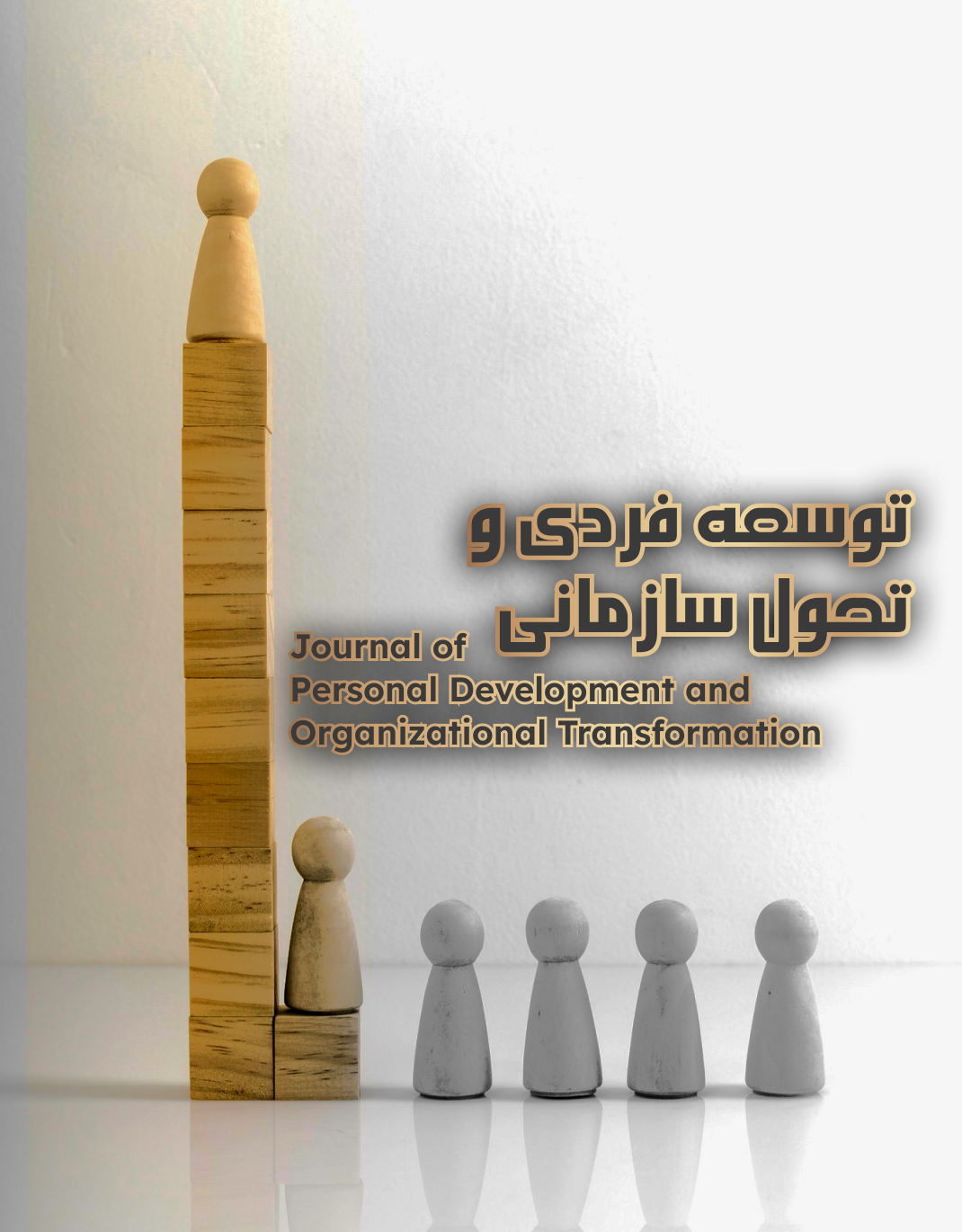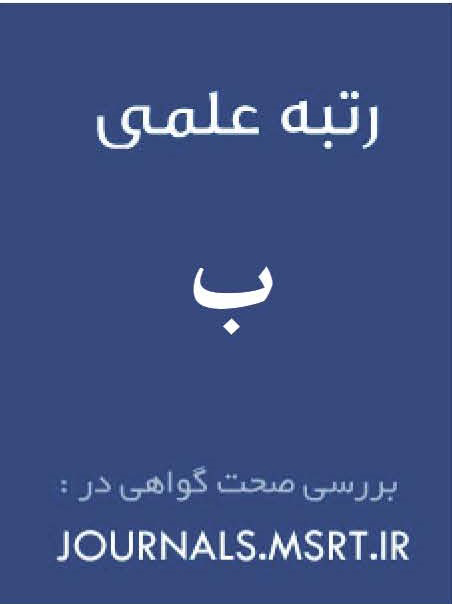Managers’ Lived Experiences of the Concept of Invisible Employees in Governmental Organizations: A Case Study of the Ministry of Culture and Islamic Guidance
Keywords:
Invisible employees, Lived experience, Psychological withdrawal, Presenteeism, Ministry of Culture and Islamic GuidanceAbstract
This study aimed to explore managers’ lived experiences of the concept of invisible employees in governmental organizations and to interpret its psychological, structural, and cultural dimensions within the Ministry of Culture and Islamic Guidance. A qualitative design within an interpretive paradigm was employed. Data were analyzed using Colaizzi’s (1978) descriptive phenomenological method. Participants consisted of 14 managers from different levels of the Ministry, selected purposefully based on managerial experience, direct exposure, and positional diversity. Semi-structured interviews were conducted as the primary data collection tool, and data trustworthiness was ensured through Guba and Lincoln’s (1985) four criteria of credibility, transferability, dependability, and confirmability. The results showed that, from the managers’ perspectives, invisible employees represent a psychological detachment manifested in functional passivity and avoidance behaviors. This detachment often arises from bureaucratic overload, seniority-based promotion, unclear career paths, and uninspired leadership. The consequences occur at three levels: organizational (loss of creativity and tacit knowledge), group (indifference and burnout), and individual (psychological distress and loss of meaning in work). The phenomenon of invisible employees is a deep organizational pathology rooted in structural rigidity, weak leadership, and cultural dysfunction. Managers view the solution as a multidimensional transformation—moving from process-oriented management to human-centered leadership. Establishing merit-based promotion systems, transparent career development, appreciation culture, and psychological safety are key steps toward restoring engagement and vitality in public organizations.
Downloads
References
Abdalla, B. A., & Mohamad, P. S. (2024). The Moderating Role of "Off-the-Job Embeddedness" in the relationship between "On-the-Job Embeddedness" And Procrastination at Work among Public University Employees: an analytical study. The Scientific Journal of Cihan University-Sulaimaniya, 8(1), 449-474. https://journal.sulicihan.edu.krd/index.php/sjcus/article/view/296
Afrahi, B., Blenkinsopp, J., de Arroyabe, J. C. F., & Karim, M. S. (2022). Work disengagement: A review of the literature. Human Resource Management Review, 32(2), 100822. https://doi.org/10.1016/j.hrmr.2021.100822
Akgunduz, Y., & Eryilmaz, G. (2018). Does turnover intention mediate the effects of job insecurity and co-worker support on social loafing? International Journal of Hospitality Management, 68, 41-49. https://doi.org/10.1016/j.ijhm.2017.09.010
Aydın, E. (2023). Does psychological contract breach lead to procrastination at work? The mediation function of organizational cynicism. Journal of Management and Economics Research, 21(1), 224-243. https://doi.org/10.11611/yead.1238902
Azizi, M., Filli, A., & Sabat, A. (2020). Examining the Role of Invisible Employees on Organizational Apathy with the Mediating Role of Job Flattening. Quarterly Journal of Business Management, 12(48), 75-93.
Da, L. H. (2017). Managing a lazy employee. The Journal of Medical Practice Management, 32(4), 265-274. https://search.proquest.com/openview/b07692e3c26279c452ef77aa94a8e84c/1?pq-origsite=gscholar&cbl=32264
De Clercq, D., Fatima, T., & Jahanzeb, S. (2022). Cronies, procrastinators, and leaders: A conservation of resources perspective on employees' responses to organizational cronyism. European Journal of work and organizational psychology, 31(1), 77-88. https://doi.org/10.1080/1359432X.2021.1928076
Deyhimpour, M. (2024). Invisible Employees and the Creation of Organizational Toxicity with the Moderating Role of Social Capital. Journal of Social Capital Management, 10(4), 411-425.
Fathi Chagheni, F. (2022). Organizational Cronyism and the Invisibility of Employees: Explaining the Mediating Role of Psychological Contract Breach in Public Organizations. Scientific Quarterly of Human Resource Management and Support Development, 17(64), 133-160.
Gibney, R., Zagenczyk, T. J., & Masters, M. F. (2009). The negative aspects of social exchange: An introduction to perceived organizational obstruction. Group & Organization Management, 34(6), 665-697. https://doi.org/10.1177/1059601109350987
Gostick, A., & Elton, C. (2006). The invisible employee: Realizing the hidden potential in everyone. John Wiley & Sons. https://books.google.com/books?hl=en&lr=&id=hG2ttqQa_RAC&oi=fnd&pg=PR7&dq=Gostick,+A.+and+C.+Elton+(2006).+The+invisible+employee:+Realizing+the+hidden+potential+in+everyone,+John+Wiley+%26+Sons.+%09&ots=tqLZkcGfXZ&sig=dpwJW2GP_bAMkYrJnrsuzt0GFNA
Gostick, A., & Elton, C. (2019). The invisible employee: Using carrots to see the hidden potential in everyone. John Wiley & Sons. https://books.google.com/books?hl=en&lr=&id=GYhJIKQM53EC&oi=fnd&pg=PT27&dq=Gostick,+A.+and+C.+Elton+(2019).+The+invisible+employee:+Using+carrots+to+see+the+hidden+potential+in+everyone,+John+Wiley+%26+Sons.+%09&ots=wHjt6qOY19&sig=ihRJ_P-t1fxp71bHXQGYJtbm2cw
Hasan, S. A., Naseem, A., Mahmood, M., Sajjad, Z., & Mirza, M. Z. (2024). Impact of supervisor phubbing on workplace incivility and workplace presenteeism: mediation and moderation effect of self-esteem and power distance. Journal of Management Development, 43(1), 68-86. https://doi.org/10.1108/JMD-08-2023-0230
Huang, Q., Zhang, K., Bodla, A. A., & Wang, Y. (2022). The influence of perceived red tape on public employees' procrastination: The conservation of resource theory perspective. International journal of environmental research and public health, 19(7), 4368. https://doi.org/10.3390/ijerph19074368
Kausar, F., Ijaz, M. U., Rasheed, M., Suhail, A., & Islam, U. (2024). Empowered, Accountable, and Committed? Applying self-determination theory to examine work-place procrastination. Research Square. https://doi.org/10.21203/rs.3.rs-4281333/v1
Lemon, L. L., & Tackett, T. (2025). The Work from Home (WFH) Employee Engagement Experience. Journal of Public Relations Research, 1-21. https://doi.org/10.1080/1062726X.2025.2455718
Li, Q., Jiang, P., She, Z., & Ma, L. (2024). Too depleted to work? A daily study on how work-related ICT use after hours influences employee next-day work procrastination behaviour. Work & Stress, 1-25. https://doi.org/10.1080/02678373.2024.2364601
Liu, M., Cheng, L., Wang, Y., Zeng, Q., & Zeng, Y. (2025). The Bidirectional Relationship Between Workplace Bullying and Presenteeism: A Systematic Review and Meta-Analysis. Workplace Health & Safety. https://doi.org/10.1177/21650799241302824
Manteghi, M. (2019). Examining the Behavioral Patterns of Invisible Employees in Organizations. Public Organization Management, 8(1), 125-140. https://ipom.journals.pnu.ac.ir/article_6360_en.html?lang=en
Masri, M., Ghafarzadeh, M., & Panahi, B. (2021). Investigating the Impact of Human Resource Leadership Agility on Reducing the Phenomenon of Invisible Employees with Knowledge Sharing as a Mediator. Management and Human Resource Development and Support, 16(59), 22-45. https://www.sid.ir/paper/965537/en
Maurya, M. A. K., & Mishra, M. K. A. (2025). A comparative analysis of sports achievement motivation among football, handball, and volleyball players of Lucknow University. International Journal of Engineering Technology Research & Management, 9(5), 1-5. https://ijobsms.org/index.php/ijobsms/article/view/413
Mousavi, S. N. a.-D., Sepahvand, R., & Fathi Chagheni, F. (2024). Organizational Cronyism and Procrastination: Analyzing the Preventive Effect of Social Capital in Public Organizations. Journal of Social Capital Management, 10(1), 31-45. https://journals.ut.ac.ir/article_86099.html
Mousavi, S. N. a.-D., Sepahvand, R., Mohammadiyari, Z., & Vahdati, H. (2020). The Role of Invisible Employees in Organizational Laziness in Public Organizations. Research in Human Resource Management, 10(1), 51-76. https://hrmj.ihu.ac.ir/m/:%20https:/hrmj.ihu.ac.ir/article_28850.html
Rastgarinia, Z. (2014). Invisible Employees: Reform and Training. Tehran: Noor Elm Publications.
Sadri Nia, M., Baqer Gorji, M., Azma, F., & Cheragali, M. R. (2022). Designing a Model for Employees' Mental Absence Using a Grounded Theory Approach in Municipalities. Public Organization Management, 10(2), 93-106. https://ipom.journals.pnu.ac.ir/article_8706.html
Salimi, N., Taban, M., Pourashraf, Y. A., & Viseh, S. M. (2021). Proposing a Model for Controlling Invisible Employees in Public Organizations (Case Study: Universities and Higher Education Institutions in Ilam City). Journal of Productivity Management, 15(58), 121-143. https://journals.iau.ir/article_684611.html
Sarria, M. Z. S. (2024). Understanding Work Procrastination: Causes, Impacts, and Management Strategies. SCT Proceedings in Interdisciplinary Insights And Innovations, 2, 245. https://doi.org/10.56294/piii2024245
Sharbatzadeh, R., Fouladi, J., Noori, M., & Navkhasi, J. (2022). Foresight of Human Resource Development in the Physical Education Organization of the Islamic Republic of Iran with a Structural Analysis Approach. Sports Science and Combat Readiness Quarterly, 2(3), 1-17.
Shariati Nejad, A., & Aini Nargesseh, Z. (2024). Identifying and Analyzing the Causes and Consequences of Presence Syndrome Using a Fuzzy Cognitive Mapping Approach. Public Organization Management, 12(2), 19-40.
Shayestahrad, A., & Chenari, V. (2022). Proposing a Model for Transforming Invisible Employees into Visible Ones in Iran's Public Sector. Quarterly Journal of Management Sciences Research, 4(11), 34-49.
Wang, H., & Zong, G. (2023). Relationship between employees' perceived illegitimate tasks and their work procrastination behavior: Role of negative emotions and paternalistic dimensions. Heliyon, 9(4), e15372. https://doi.org/10.1016/j.heliyon.2023.e14984
Yang, F., Luo, C., & Pan, L. (2024). Do digitalization and intellectual capital drive sustainable open innovation of natural resources sector? Evidence from China. Resources Policy, 88, 104345. https://doi.org/10.1016/j.resourpol.2023.104345
Downloads
Published
Submitted
Revised
Accepted
Issue
Section
License
Copyright (c) 2025 Ahmadhosein Fataei (Author); Kumars Ahmadi; Fatemeh Sohrabi (Author)

This work is licensed under a Creative Commons Attribution-NonCommercial 4.0 International License.






